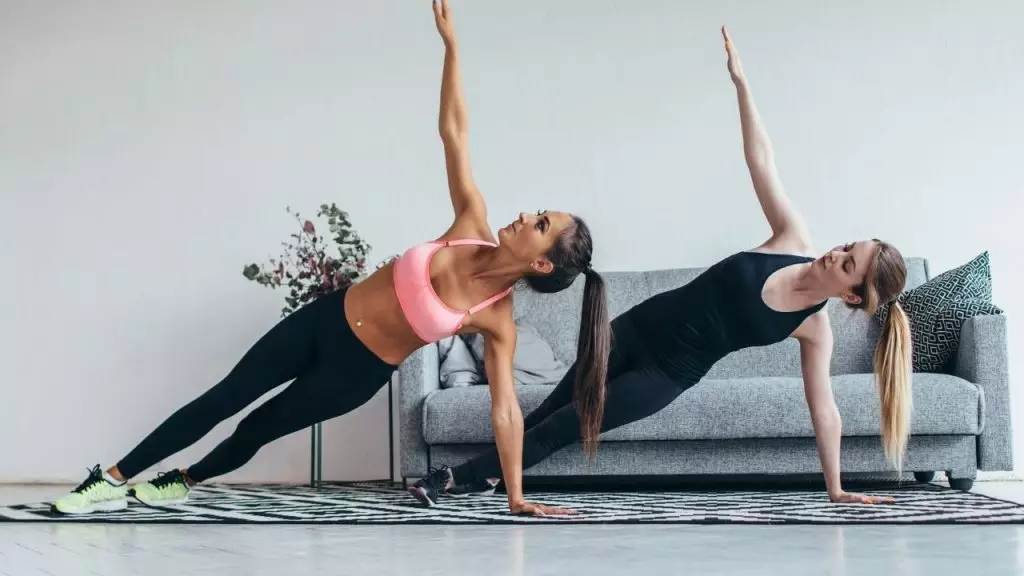While most of us struggle with tight work schedules, it seems that you don’t have time for staying in shape, and due to all those pressures, a lot of people end up with early chronic diseases.
The gym isn’t the ideal solution for hard workers, but you can still practice at home. It is the perfect way to work, practice, and still have time for your life.
There are lots of exercises that would make a great workout even away from the gym, and while most of them are essential, they still work on specific areas of your body, but you still need some exercises that workout your whole body. One of these exercises which you should consider rolling into your workout schedule is planks.

What is a plank and why should I do it?
The plank exercise is one of the best moves you can do not only for your core, but your entire body. In its basic form, the plank requires you to hold an isometric position, which means you maintain constant tension in one pose, without actually moving. Doing so will strengthen your abs, back, shoulders, glutes, and sometimes even your arms and legs, depending on how you switch it up (see, it is a total-body exercise!).
The reason you want to add planks to your regular workout routine? A strong, stable core forms the basis of all movements—you need stability straight from your midsection to perform any exercise, from squats to shoulder presses. Plus, planks help to improve your posture and add definition to your abs, too.
Whether you can hold a plank exercise for 20 seconds or a full two minutes, you’ll love these fresh takes on the typical move. Even better: 16 of the variations don’t require a single piece of equipment. So meet your new go-to moves for getting in a solid core workout no matter where or when you can fit in some fitness.
Benefits of plank exercises
Plank exercises are an excellent alternative for many other workouts, such as crunches; they can help you improve core strength and stability. They can also make your body stronger and much more durable.
It also improves your weaknesses, which makes plank exercise a perfect addition to your workout schedule. It’s an easy one; basically, anyone can do planks, but first, we should make sure that you do it the right way to avoid any unwanted injuries.
To do a perfect plank exercise, you should put your hands in a straight line on your mat, and hold your body in a straight line from head to toe, be careful not to let your stomach sag or your back round. This leaves us with one other question to answer, for how long should you hold a plank? Well, this question is debatable; it depends on your body and its strength and durability. Here are the most common time goals for plank exercises:
- 30 sec- it’s ok
- 1 min- average
- 1 min 30 sec- good
- 2 min- very good
- 3 min- excellent
- 5 min- plank master
- 8 hr 15 min 15 sec- that’s the Guinness World Record for men.
But to make the world’s new record in planking, we must do various kinds of planks, and there are so many ways that only make you strong and healthy.
1. Forearm plank
This is what most people consider a standard plank.
Lie facedown with legs extended and elbows bent and directly under shoulders; palms flat on the floor. Place feet hip-width apart, and elbows shoulder-width apart. Engage your abs, then tuck your toes to lift your body (forearms remain on the ground; press the floor away from you with forearms). You should form straight line from shoulders to heels. Hold for 30 to 60 seconds.
2. Straight-arm plank
This plank looks like the top of a push-up and requires shoulder stabilization, too.
Start on all fours with wrists directly under shoulders, toes on the floor. Then, step one foot back and then the other as you engage abs and strengthen legs. Press the floor away from you with hands. You should form a straight line from shoulders to heels. Hold for 30 to 60 seconds.
3. Side Plank

This variation on the typical plank exercise turns up the burn on your obliques, or the muscles on the sides of your midsection, while still working your deep core muscles.
Start lying on right side, hips, knees, and feet stacked. Place right hand on floor, pressing it away from you, as you engage your right oblqiues and lift hips toward the ceiling. Lift left arm toward the ceiling, forming a T with arms. You should form a straight, diagonal line from shoulders to heels. Hold for 30 to 60 seconds, then switch sides.
4. Side plank with leg lift
This exercise is so identical to the previous one, Adding lifting the upper leg in the air then holding it.
5. Reverse plank
Sit on the floor with legs extended in front of you and arms at your sides. Place your hands on the floor next to your hips, fingers pointing toward your feet. Lift hips as high as you can, aiming for a straight line from chin to toes.
It’s ok if you discover here that your shoulders aren’t as flexible as you thought. Just take it slow.
6. Plank with shoulder tap
Start with the standard plank position. Take your left hand and touch your right shoulder with it, then put it back to its place and repeat on the other side.
This exercise is a friendly, fun addition to your workout.
7. Knee-to-inside-elbow plank
Start in the standard plank position. Slowly bring the right knee under and across your body, toward the inside of the left elbow. Get it as close as you can without dropping the right shoulder and hip. Repeat on the other side.
8. Knee-to-outside-elbow plank
Start in a standard plank. Slowly bring the right knee toward the outside of the right elbow. Hold then repeat on the other side.
9. Plank hip dip
Start in the low plank position. Slowly dip both hips to the right side. Go down as far as is comfortable without touching the floor. Lift back up to a plank and repeat on the other side.
10. Side plank crunch
Start in a side plank. Push into the floor with the bottom foot and lift the top leg. Bend the knee and bring it in to touch the top elbow. Try not to lean forward and hold. Then repeat on the other side.
11. Reverse plank hip lift
Start sitting on the floor with legs extended in front of you and arms at your sides. Plant hands firmly on each side, and lift hips as high as they’ll go. Lower hips slowly toward the floor without touching it, and then lift them again.
To make it a bit easier, start with bent knees and work up to keeping your legs straight.
12. Reverse plank leg raise
Start in a reverse plank with hips lifted and head facing forward. Lift one leg as high as you can without bending your waist. Repeat on the other side.
13. Mountain climber
Start with a standard plank. Bring your right knee toward your chest, then take it back and repeat with the other leg.
Athletes usually shift between legs quickly, but it’s ok to start slow if that’s too hard.
14. Plank with a pike jump
Start with a standard plank, then jump with your feet toward your hands, and go back. Keep on doing that until you finish your time.
15. Arm circle plank
Start with a standard plank position, reach your left arm back and then circle it overhead, bringing your palm back to the floor; repeat on the other side. This counts as one rep.
16. Plank side-walk
Begin in a plank position with your hands underneath your shoulders, body in one straight line. Cross your right hand over your left as you step your left foot to the left, Then simultaneously step your left hand and right foot to the left, so you’re back in the plank position. Your hands move together as your feet step apart. Repeat that on both sides.
17. Frogger
Begin in a standard plank position. Jump your feet to the outside of your hands, coming into a deep squat with your hands still on the floor. Jump your feet back to a plank and repeat.
18. Plank with bunny hop
Start in a standard plank position with the feet together. Jump your feet to the right, bringing your knees toward your right elbow. Your torso will twist to the right. Jump your feet back to plank and repeat.
19.Two-point plank
Start in a standard plank; lift your left leg off the ground till your heel is even with your pelvis. Keeping your torso steady, reach your right arm forward. That way, you are balancing on your right leg and left arm, hold that position, then repeat on the other side.
20. Dolphin plank
This yoga hybrid works your abs to the max, as well as your shoulders and back.
Start in a forearm plank, shoulders over elbows, feet hip-width apart, and forming a straight line from shoulders to heels. Engage your abs, pressing your belly button toward your spin and tuck your pelvis slightly forward as you lift your hips toward the ceiling. At the same time, press through your forearms and bring your head toward your elbows. You should hit a V shape at the top. Slowly return back to forearm plank and repeat. Go for 30 to 60 seconds or 8-10 reps.
Plank exercises are varied, and all these exercises work for one goal, which is helping you build a great healthy body, and that’s because your health always comes first.




